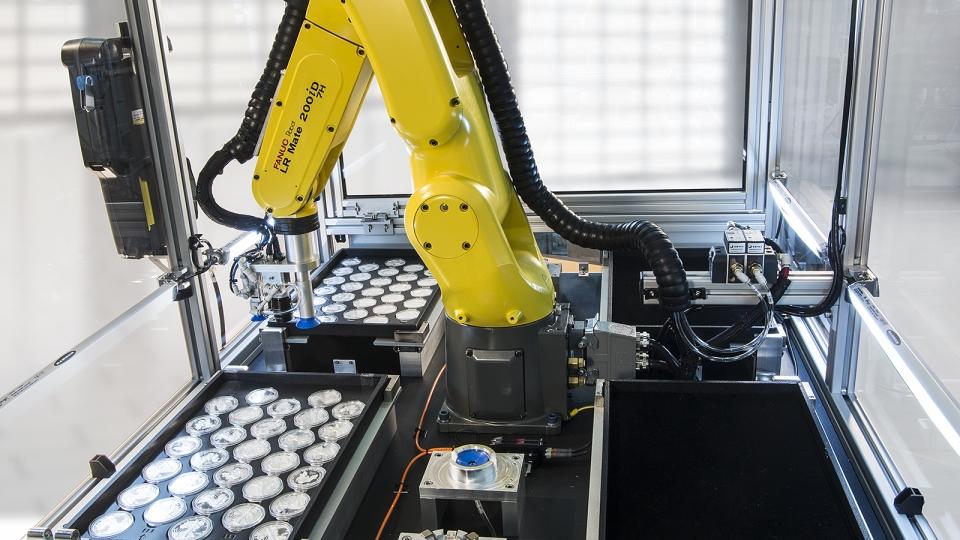In an era where the quest for innovation intertwines with the profound complexities of biological systems, the field of cell engineering stands at the forefront of scientific advancement. As we navigate the intricate landscape of cellular manipulation and design, the need for a comprehensive and adaptable solution becomes increasingly critical. Enter Technology Networks, a pioneering force dedicated to bridging the gap between cutting-edge research and practical application. This article delves into their universal cell engineering solution—a versatile framework poised to revolutionize how we approach cell design and application across various disciplines. Join us as we explore the groundbreaking methodologies, collaborative efforts, and the potential implications of this transformative technology on the future of biomedicine, agriculture, and beyond.
Harnessing the Power of Universal Cell Engineering for Biotechnology Advancements
Recent breakthroughs in universal cell engineering are revolutionizing the landscape of biotechnology, offering unprecedented opportunities for innovation and research. This pioneering approach involves the optimization of cellular systems to serve multiple purposes across various biotechnological applications. By leveraging synthetic biology techniques, scientists can craft cells that are not only resilient but also adaptable. Such cells can be programmed to produce high-value compounds, develop novel therapeutics, and enable efficient bioconversion processes. The versatility of universal cell engineering is set to redefine traditional methodologies, paving the way for more sustainable and efficient biological manufacturing.
The implications of this technology are extensive, encompassing an array of sectors from medicine to agriculture. With a focus on scalability and reproducibility, universal cell engineering can facilitate the following advancements:
- Enhanced biomanufacturing techniques for pharmaceuticals
- Innovative approaches in gene editing for precision therapy
- Development of biosensors for environmental monitoring
- Creating biofuels from renewable resources
As industries seek to adopt greener practices, the potential of universal cell engineering in improving existing biocatalysts is paramount. Through collaborative research and investment in technology, the objective is clear: to harness cellular capabilities that drive forward-thinking solutions.
Innovative Technologies Driving Efficiency in Cell Engineering Applications
Recent advancements in cell engineering have paved the way for a new era of efficiency, driven by a plethora of innovative technologies. These tools have not only streamlined the workflow but have also enhanced the precision of cellular manipulation. Key technologies contributing to this transformation include:
- CRISPR-Cas9: Revolutionizing gene editing with its unmatched accuracy and simplicity.
- Automated Cell Culture Systems: Reducing human error and labor costs while increasing throughput.
- Microfluidics: Providing precise control over fluid movement at the microscale for efficient cellular analysis.
- AI and Machine Learning: Enabling predictive modeling to accelerate discovery and optimization processes.
Another significant development is the integration of sensory feedback systems, which allow for real-time monitoring and adjustments during cell cultivation. This leads to optimum growth conditions and cellular viability, ultimately ensuring better yields. The following table summarizes some of the latest technologies and their benefits:
| Technology | Benefits |
|---|---|
| CRISPR-Cas9 | High precision gene editing |
| Automated Systems | Increased efficiency & reduced labor |
| Microfluidics | Enhanced analysis capabilities |
| AI Approaches | Faster data processing & insights |
Strategic Recommendations for Implementing Universal Cell Solutions in Research and Industry
To effectively integrate universal cell solutions across various sectors, it is essential to establish a clear framework and set actionable goals. Organizations should begin by assessing their specific needs and the capabilities of the proposed cell technology. Collaboration among interdisciplinary teams is crucial, as it encourages diverse perspectives on implementation. Key recommendations include:
- Engagement with Stakeholders: Facilitate discussions with researchers, industry leaders, and regulatory bodies to align on objectives and expectations.
- Customizable Protocols: Develop adaptable protocols that cater to different research scopes or product requirements, ensuring flexibility in application.
- Training Programs: Implement comprehensive training programs for personnel to familiarize them with universal cell engineering practices and technologies.
Furthermore, it is vital to establish support networks that can enhance the efficacy and reach of universal cell solutions. This includes creating a centralized knowledge repository and fostering innovation through feedback loops where users can share insights and experiences. Building robust partnerships with technology providers can also streamline adoption and transition processes. A proposed structure for partnerships might include:
| Partnership Type | Benefits |
|---|---|
| Academic Collaborations | Access to the latest research and technologies |
| Industry Alliances | Shared resources and expertise for product development |
| Regulatory Partnerships | Streamlined compliance processes |
The Way Forward
the journey through the landscape of universal cell engineering has illuminated the transformative potential that lies at the intersection of biology and technology. As we stand on the brink of groundbreaking innovations, platforms like Technology Networks are not only highlighting advancements but also fostering collaboration among scientists, engineers, and visionaries worldwide. The strides made in this field promise to revolutionize our approach to health, agriculture, and environmental sustainability. With each discovery and breakthrough, we edge closer to unlocking the full potential of cell engineering, paving the way for a future where tailored solutions can address some of humanity’s most pressing challenges. As we look ahead, embracing the convergence of scientific exploration and technological prowess will be essential in shaping a healthier, more sustainable world for generations to come. Stay engaged, stay curious, and let the exploration continue.
